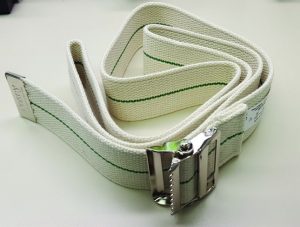Author: Wendy Wintersgill, MSN, RN, CRRN, ONC, ACNS-BC, and Gary A. Greenslade, MPT
An organizational road map to gait belt use.
Safe patient handling training for nurses, physical therapists, occupational therapists, and nurse aides should include the use of transfer aids, lifts, and gait belts. (See Mobility and lift safety tips.) Gait belts, the focus of this article, can help enable functional mobility and reduce patient falls and patient and staff injuries. Without gait belt use, an organization has a gap in its safe patient handling and mobility programs. (See Fall prevention and organizational health.)
Read more


